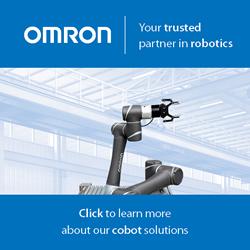STEPPERONLINE New Linear Stepper Motor
Linear stepper motor is a device that generates force and motion through a straight line. Linear stepper motor uses a stepper motor as a source of rotational power. Inside the rotor, there is a threaded precision nut instead of a shaft. The shaft is replaced by a lead screw. When the rotor is rotating (as in a conventional stepper motor), linear motion is achieved directly through the nut and threaded screw. It makes sense to perform the rotation directly to the linear transformation inside the motor, because this method greatly simplifies the design of the rotation to linear applications. This makes high resolution and precision ideal for applications that require precise motion. The step size of the linear stepper motor is determined by the step angle of the motor and the pitch of the internally threaded nut and the lead screw. In order to ensure high working efficiency, there must be a certain degree of freedom between the rotor and the lead screw, which requires a certain gap between the two, which is about 0.03 to 0.08 mm axial clearance (also called backlash).
Linear stepper motor can directly move linearly, which can make the machine miniaturized. In addition,linear stepper motor normally has high precision than normal stepper motor. Because the mechanical transmission mechanism such as the lead screw is eliminated, the tracking error caused by the delay of the transmission system during the interpolation is reduced. Through the linear position detection feedback control, the positioning accuracy of the machine tool can be greatly improved. Linear stepper motor also has advantage of high efficiency, since there is no intermediate transmission link, the energy loss during mechanical friction is eliminated.
There is a threaded precision nut rather than a shaft inside the rotor. The shaft is replaced by a lead screw. When the rotor rotates (as in traditional stepper motors), linear motion is achieved directly through nuts and threaded screw. It is meaningful to complete the rotation-to-linearity conversion directly within the motor, because this method greatly simplifies the design of rotation-to-linearity applications. This makes high resolution and precision very suitable for applications requiring precise motion.
Linear stepper motor has been widely used in many applications, including blood analyzers and other medical instruments, automatic stage lighting, imaging equipment, HVAC equipment, valve control, printing equipment, X-Y meters, integrated chip manufacturing, inspection and testing equipment. This attractive technical solution eliminates the use of many components and the associated costs associated with assembly, purchase, inventory, etc. Linear stepper motor has following advantages: High-speed responsiveness, high efficiency, high transmission height, stable thrust, fast speed, short acceleration and deceleration process, unlimited stroke length, low noise during operation and high precision. Due to the mechanical transmission mechanism such as the lead screw is eliminated, the tracking error caused by the delay of the transmission system during the interpolation is reduced. Through the linear position detection feedback control, the positioning accuracy of the machine tool can be greatly improved.
For more information, please visit www.omc-stepperonline.com.
Featured Product

